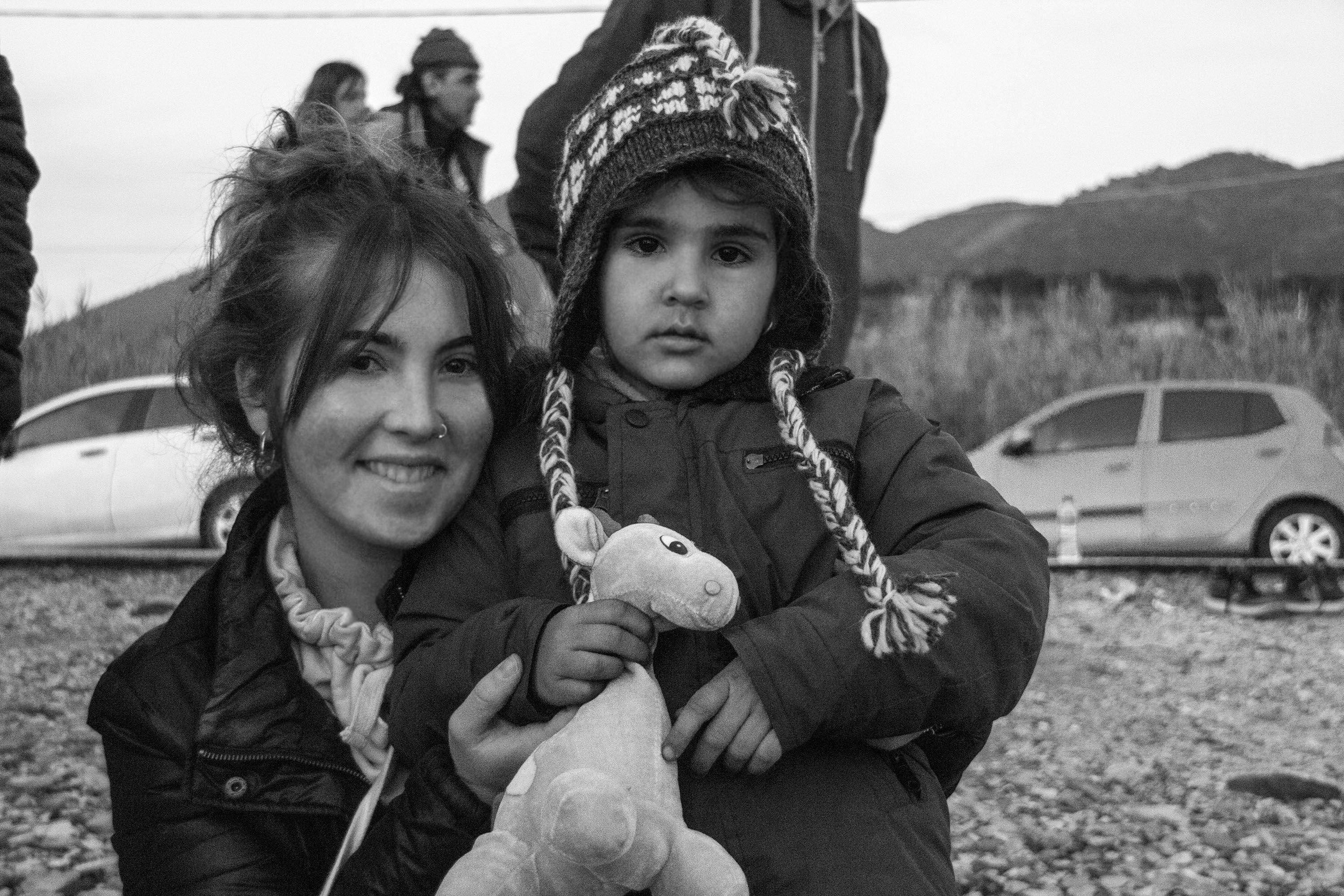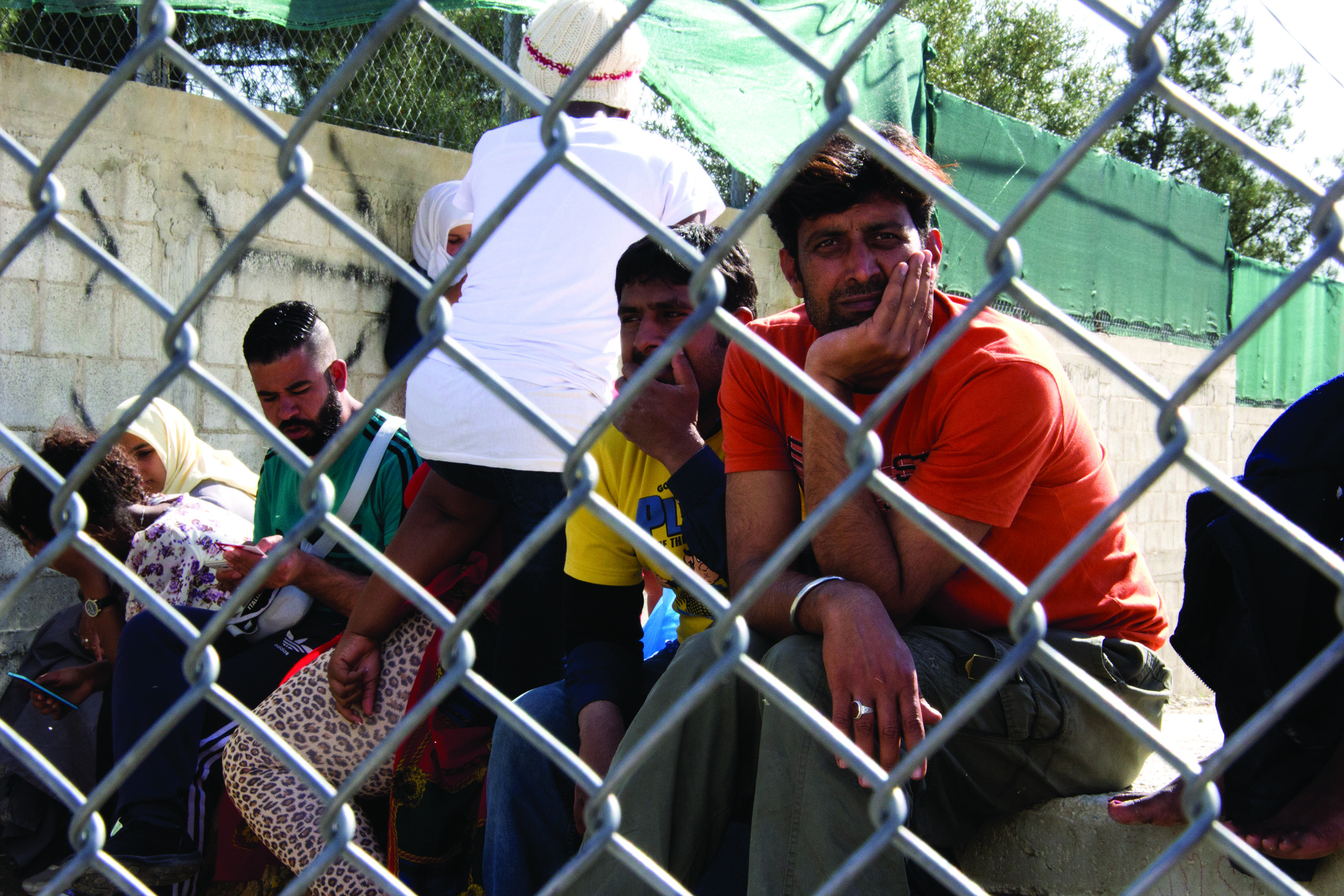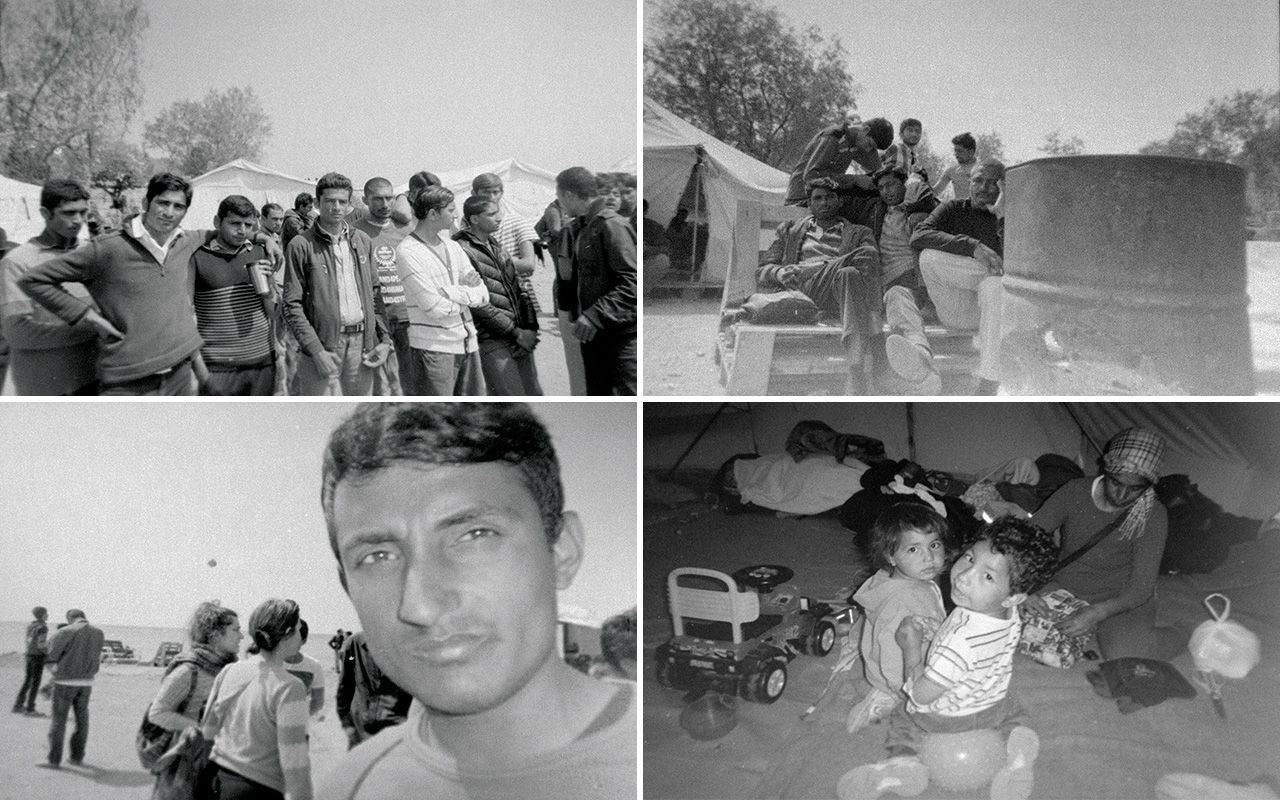Virgnia spent 4 days in Berlin and 8 in Lesbos to photograph the situation of the people who have had to flee Syria due to the war. Virginia Jareño, fourth-year student of Audiovisual Communication at CEU chose this topic for her End of Year Project, titled “Apartheid”. In this interview she recounts her experience, progresses on some projects and thinks about the communicators’ role in the conflicts.

You went to Berlin and Lesbos. Why these two locations?
I chose Berlin because it is the vital European point where all the refugees wanted to go. I knew that I was going to find refugees there, as I had been previously investigating places where they could be found.
And I chose Lesbos because it is one of the main European destinations where refugees were arriving. It was possible to make a more secure route on ground, opening the border between Turkey and Greece, but it was closed so the refugees had to travel on boats to be able to arrive at the island of Lesbos. When they crossed the Middle East, they arrived in Turkey where there were mafias that made them pay (from 400 to 1,500 euros per person) to cross the Aegean in zodiac boats that were in poor condition.

What I wanted to show in my work was two completely opposite places and where the refugees receive different treatment – in Berlin better than in Lesbos – due to the governments.
For example, in Berlin there are different distributed shelter houses or refuges with some good facilities, meanwhile in Lesbos these people were in camps or open campgrounds which left a lot to desire.
How have you approached your project?
“Apartheid” expresses the reality from a documental focus, without forgetting that this requires a feeling of responsibility and skill at the time of dealing with the ethical aspects that surround this type of photography.
I WAS INSPIRED BY THE WORK OF TOM STODDART, WHO BASED HIS PHOTOGRAPHS ON CONVINCING US OF THE NEED TO RESPOND TO THE FEELINGS OF THE PEOPLE WHO APPEAR IN THEM
Empathising with these people was the main objective before photographing them, as they are living on the margin of society and they have been seen in very complicated situations.
The intention was not to arrive at the place and shoot the camera, but to gain their trust and show their social cultural, psychological and physical aspects. This methodology was inspired by the work of photographer Tom Stoddard, who based his photographs on convincing us of the need to respond to the feelings of the people who appear in them.

What has impacted you the most?
There are many things that I have seen in Lesbos that have really left a mark on me. It really impacts seeing how the people arrive in boats in unfavourable conditions in the middle of the night, with children and seniors, and even people with physical problems. It also draws a lot of attention that, just after arriving at the island, they kiss the ground and ask if it is Europe, which sounds quite ironic, as if Europe were helping them…
JUST AFTER ARRIVING, THEY KISS THE GROUND AND ASK IF IT IS EUROPE, WHICH SOUNDS QUITE IRONIC, AS IF EUROPE WERE HELPING THEM
In spite of everything, you can see a shimmer of hope in their eyes, especially when they see that you help them, you speak to them and you want to know their story; they express themselves by telling you and they always accept you with a smile.
It is also very touching to see so many volunteers helping these people, when they arrive, handing them dry clothing, or when they are in the open camps, dishing out food, amongst many other labours.

One of the other aspects that impacted me was how after only 10 or 15 minutes had passed after the arrival of one boat, a bus of Greek authorities arrived to take the people to the camp in Moria (it sounds so bad, but it’s true). They didn’t care that even though the refugees were wet, the aim was to take them.
What is this camp like?
It is a closed and fenced area, with barbed wire, like a prison, where there are thousands of refugees. The maximum capacity is exceeded and the conditions in the camp, according to the refugees, are abysmal.
IT WAS HARD TO START TAKING PHOTOGRAPHS OF THE BOATS AS SOON AS THEY ARRIVED. MANY THINGS GO THROUGH YOUR HEAD AND YOU ASK YOURSELF IF IT IS OKAY TO DO IT.
Not too long ago, it was a registration camp for the refugees who arrived in Lesbos, but when agreement of the EU with Turkey came into force, it became a detention camp.
The refugees cannot leave this camp and the volunteers cannot go inside the camp to help.
Obviously, this experience goes much further than an End of Year Project. What have you learnt?
I have learnt to value many things and to separate them from the other things that aren’t really necessary. Above all, that what can seem like the most insignificant thing to us, can really help and be the world to them.

Professionally I have also learnt a lot, especially about the ethical point of view that I considered every time I took a photograph when it portrayed a complicated situation. The especially difficult moment for me was seeing the arrival of the boats. It was hard to start taking photographs of the boats as soon as they arrived. Many things go through your head and you ask yourself if it is okay to take a photo of the incident.
But that is the role of the communication professionals…
Yes. I believe that the most important thing that can be done is to capture the stories and images where people can appreciate the reality that is shocking us and above all the affected, the people who have left everything to find a better life.
I BELIEVE THAT THE MOST IMPORTANT THING THAT COMMUNICATION PROFESSIONALS CAN DO IS CAPTURE THE STORIES AND IMAGES WHERE PEOPLE CAN APPRECIATE THE REALITY THAT IS SHOCKING US
The role of the professional who takes the photographs is very important, because they move to a place where a series of events are happening that must impact the whole world. We must put ourselves in the position of these people and help them, either through NGOs or even moving to the places where they are. And the leaders must look for solutions. In our country we should give them asylum.

Technical considerations aside, your photos have great symbolic value. Will you do anything else with them?
Although for now they are merely being used for the EYP, yes I would like to publish them. The project book will certainly use them, giving them some views for a portfolio. It is a book that chronologically captures the places that I have visited. First Berlin and, with that, the refuge of Berlin Tempelhof, and then, in Lesbos, the deserted area of life jackets, the detention camp in Moria and No Border Kitchen (open refugee camp)
THE PROJECT INCLUDES THE SHOOTBACK TECHNIQUE (I GAVE SOME DISPOSABLE CAMERAS TO REFUGEES TO SHOW US THEIR POINT OF VIEW IN THE CAMP)
The project also includes the Shootback technique (I gave some disposable cameras to the refugees to show us their point of view in the camp) and some photographs from an organisation of volunteers and rescue people called PROEM-AID (that helped me and gave me information) as well as photos of the protest that occurred at the Mytilene port the day the deportations of refugees to Turkey started.

Also, it includes maps so the reader can locate the Route of the Balkans and the 60km track in Lesbos that the refugees had to walk just after arriving at the island to register themselves. It also contains explanatory texts in English and Spanish, of the different places that appear in the book.
Will you go back?
I would like to go back to Lesbos to help and go further into this project, as it has awakened something very troubling in me.
Any other plans?
In the long term, I would like to travel to other countries where there are complicated situations and be able to capture them on photo. This is a project that requires a lot of study, but in no way will I abandon it.
Good luck and thank you for everything.
Thank you.






